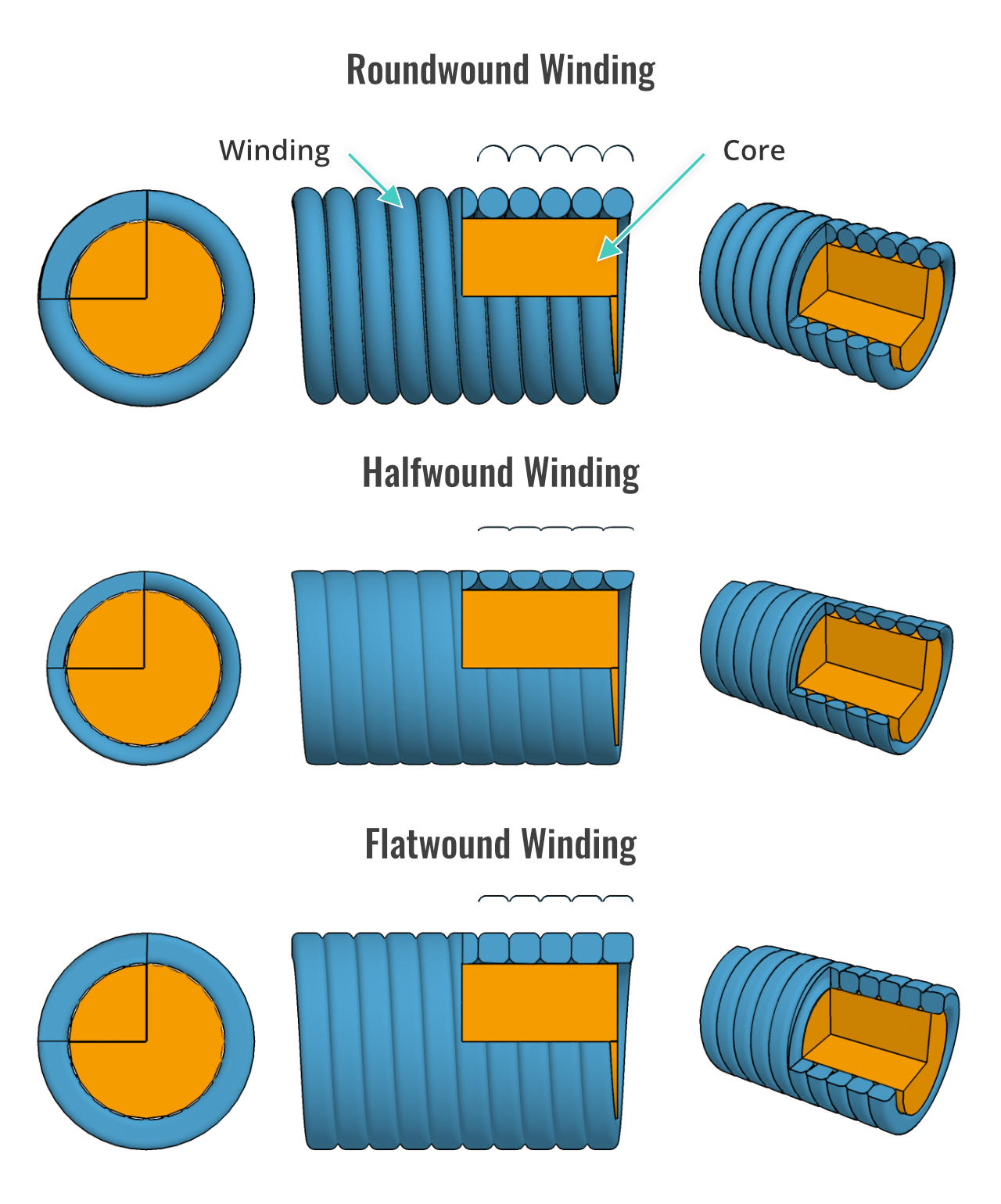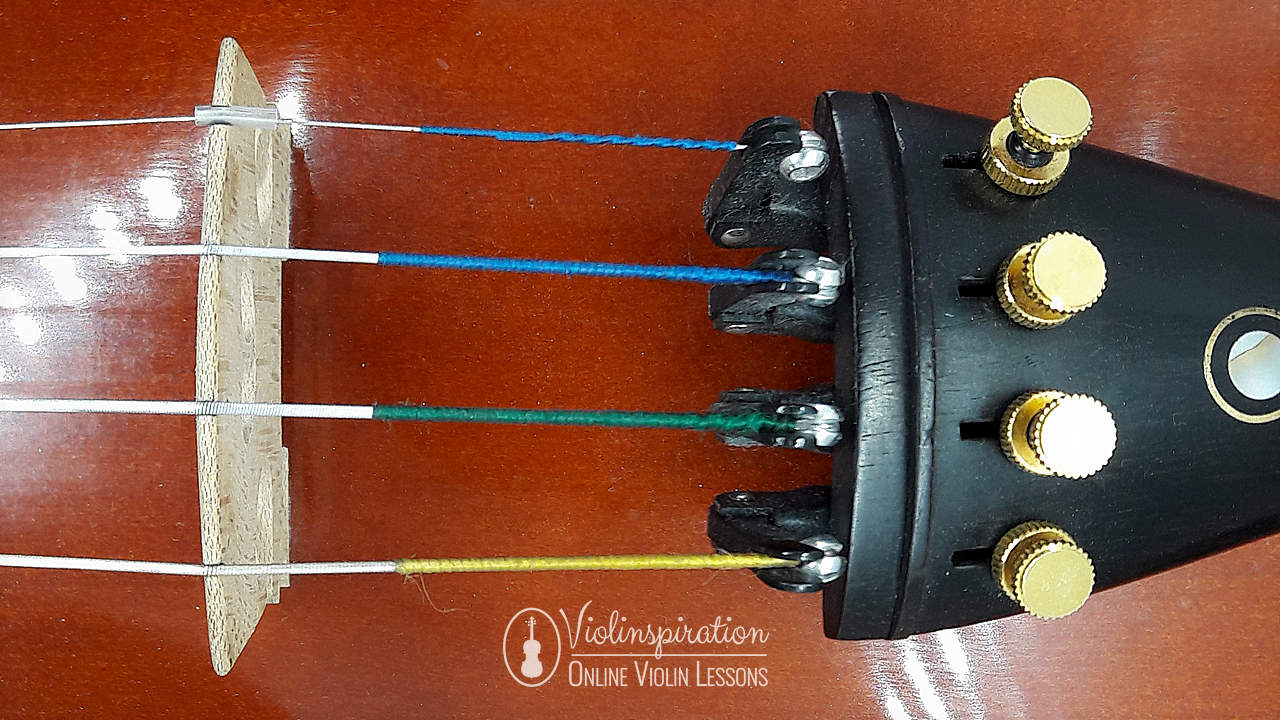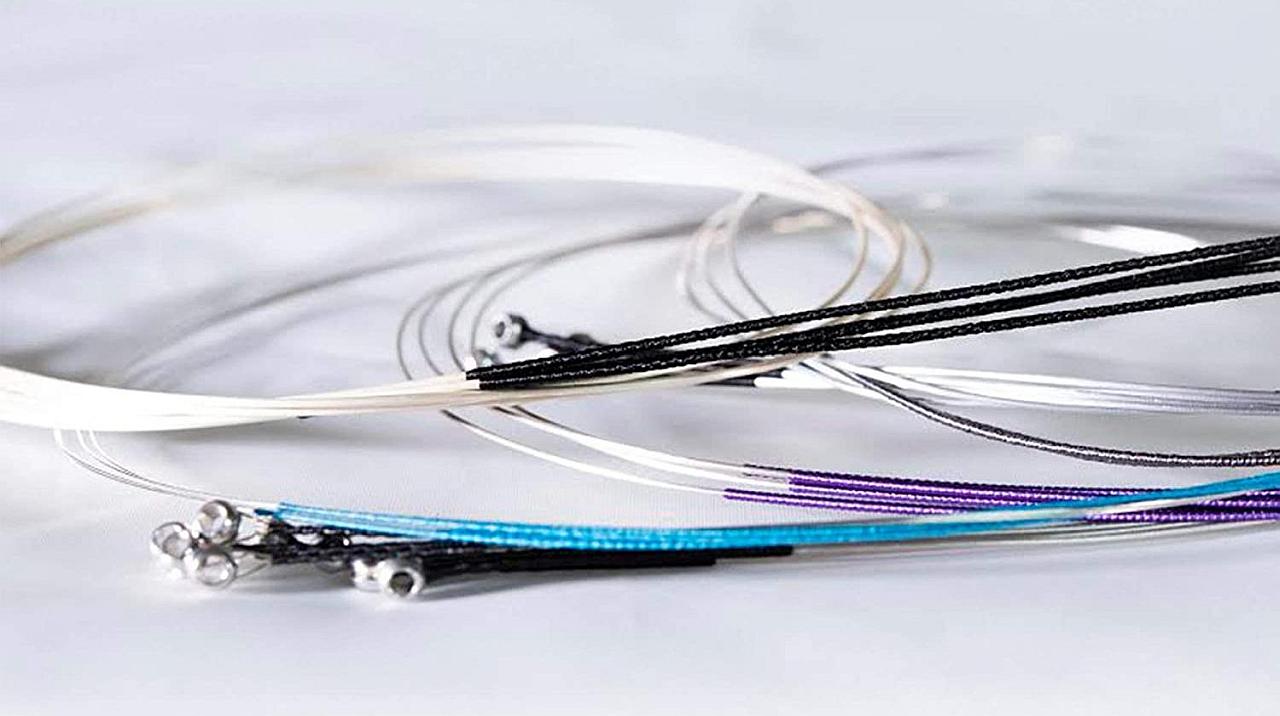Let’s examine the materials that violin strings are made of.
If you’re new to the violin, it might be surprising to learn that the sound of your instrument can change drastically by changing the strings. Also, not only there are a lot of different brands but there are also different types of strings that are made using different materials. I’ll examine them in this article so to help you choose the strings that are more fitting for your violin as well as your taste.
Materials for the Core of Violin Strings
There are three core types that violin or any other stringed instrument can use: gut, metal/steel, and synthetic core. Each has a distinct sound and is usually used for a different repertoire. The core materials are responsible for the tension of the string, the tonal direction, and the weight of the string. A heavier string has fewer harmonics but is louder, for example. Let’s see them in detail, or remind if you already have read the article “6 Things to Consider When Choosing Violin Strings.”
Gut Violin Strings
For a long time, the strings used for all stringed instruments were made of sheep intestines, also called catgut. So despite popular belief, no, they weren’t made from cats’ intestines. The intestines were extremely stretched, dried and twisted, and wound with varying metals. The strings need to have enough mass to be resonant and enough flexibility so the harmonics won’t sound out of tune.
Compared to steel or synthetic strings they have lower tension, bend more so they are softer to the fingers, usually have a slower response, and need more frequent tuning. They are a bit difficult to handle for beginners, due to the specific pressure needed from the bow to achieve the best sound, but advanced players can easily master them and produce an incredibly rich tone.
While some players use them for any music they play, more often they are used in historically informed performances, so to achieve authenticity.
In my opinion, while the sound of the gut strings is indeed unique, there are alternatives that should be used pretty much exclusively rather than using animals’ intestines.
Metal / Steel Core Violin Strings
At the beginning of the 20th century, steel core strings were introduced and became popular. Steel strings don’t have the rich sound and depth of the gut strings but have a quick response and brilliant tone. The metal core makes them more stable so they don’t need tuning all the time, compared to gut strings, and are also easier to tune.
The first to be replaced was the E string since gut strings can break easily, especially the thinnest string. The three types of E strings available are:
- plain steel
- plated
- wrapped.
In recent years sometimes E strings are plated with other materials such as:
- tin
- gold
- silver
- platinum.
There are slight differences in sound and durability between them.
The steel core violin strings are usually made of:
- Chrome steel, which can be coated or uncoated
- Carbon steel, such as wire or rope.
Because of their lack of depth in tone but also their louder sound, they are not preferred by classical violinists. However, they are frequently used by jazz violinists or fiddlers and they are great for electric violins.
Synthetic Violin Strings
Synthetic core strings are fairly new. They were introduced about 40 years ago by Thomastik – Infeld with a core made of perlon, a type of nylon. Now, also polyester is used for making synthetic strings. These strings are the best alternative to gut strings, they are used by professionals and students alike.
Synthetic core strings combine the stability and durability of the steel core strings with the warm and rich sound of the gut core strings. They are very responsive and have great pitch stability, so changes in temperature don’t affect them and they don’t need to be tuned as often as gut strings. Their tone is more focused and not that complex but that can be solved with other synthetic core materials that have been introduced the last couple of years, thus they can be found using the name “composite”.
Those are the most frequently used strings for a good reason.
Synthetic strings are also called “composite” because they are coated with materials such as tin, gold, or platinum. This gave synthetic core strings the advantage of being equal, or even better than gut strings because some of these materials enrich the tone drastically. Gold and especially platinum make the tone noticeably richer and can produce louder sounds but are expensive.
Fun Fact: the core of a string can be round or hexagonal. The first type is traditional, and the second, modern, was introduced to avoid slipping of the winding around the core.
Which Violin Strings to Choose?
When choosing violin strings, it all depends on your needs, aesthetic perception, and your budget. Trial and error will be your best friend to determine which strings you prefer. The safest option is to start with synthetic strings since they are a catch-all.
If you prefer the electric violin, or you’re playing folk or jazz you might prefer steel strings.
I would not recommend gut strings first of all if you’re feeling awkward by the thought that your violin caries animal intestines. They are also hard to use for a beginner, and except if you’re into historical accuracy and baroque repertoire, I would suggest avoiding them.
Here’s an article with some more in-depth analysis on how to choose the right strings for you.
Materials for Strings Finishing
Now, let’s have a look at what the outer layers of violin strings are made of.
Materials used for violin strings’ coating
Whether the winding is roundwound, flatwound, or halfwound, the materials for string’s coating or winding are the following:
- aluminum
- aluminum alloy, e.g. hydronalium
- silver
- gold
- nickel
- chrome steel
- chromium-nickel steel
- tungsten
- titanium
- tin.

A Bead in Violin Strings
Usually, at the end of the string that goes to the tailpiece, all strings come with a loop with a metal bead in it. However, there are strings, usually the E and sometimes even the A string, that only have a loop and no bead. Is there really a difference?
There are some older tailpieces with the fine tuner for the E string that is a claw sticking out into the direction of the bridge, where the loop of the string can be attached. This was in use before the invention of the modern tailpiece with fine tuners that can hold the bead (for each string in some cases). If there is no fine tuner, the bead is attached to the hole of the tailpiece, just like the other strings. Some traditionalists prefer no fine tuners at all or maybe just on the E string. Some people believe that fine tuners hold back vibrations, but there are several arguments for both sides.
This is really a matter of preference. For advanced players, I suggest trying both, and if you see and, most importantly, hear any difference choose the one you prefer.
Strings Silking
You’ll notice that strings have different colors, sometimes at both ends. Different brands might have different colors and at first glance, they might not make much sense. The colors are identification markers for distinguishing the various brands, the different sets, and the notes each string represents. On some occasions, they might represent string gauge or the type of coating.
You don’t have to learn to identify them of course, if you look closely at the box they came in, they have a chart or an explainer of some sort. String ends are wrapped using silk strands, and the combination of colors and patterns are pretty much infinite, so each manufacturer uses their own identification markers. You might find similarities in different sets by the same brand.
This can be a lifesaver when you remove all the strings at once and you don’t remember which string is which, or if you mix and match different types of strings. By doing a quick internet search, you can find charts showing the different colors and patterns used for each brand so you can identify the manufacturer, even if you don’t know which strings a violin wears!

Frequently Asked Questions about Violin Strings
Are Violin Strings Made From Cat Guts?
No, violin strings are not made of cat guts. Violin strings were originally made of sheep intestines, these strings are also called catgut which is probably the reason for the misunderstanding. These were used for all stringed instruments until the early 20th century when metal strings started to gain popularity.
Gut strings are still being used, though mostly for historically informed performances.
What Animal are the Violin Strings Made From?
Until the early 20th century, sheep or sometimes goat intestines were used to make strings for the violin and the various stringed instruments. The instruments used today are using either steel or synthetic core strings. They are still being used by baroque players or performers who prefer their rich tone.
Are Violin Strings Made Out of Horsehair?
No, violin strings are not made of horsehair, it is only being used in the bow. The average violin bow has a ribbon of horsehair between the tip and the frog. Traditionally the hair comes from the tail of a grey male horse, which has predominantly white hair.
Which is the Most Commonly Used Type of Strings for the Violin?
Synthetic core strings are the most commonly used type of strings, since the 1970s. Those strings have all the advantages and almost none of the disadvantages of steel core or gut core strings.
Originally gut core strings were used for the violin and all other string instruments. Those strings have a rich tone but need constant tuning. In the early 20th century, steel core strings were introduced which had better durability and were more stable but were lacking a rich sound. In the 1970s synthetic core strings were introduced which have similar, if not better, quality with gut strings as well as all the advantages of metal strings. These are the most commonly used today, though jazz and folk musicians prefer metal strings and baroque musicians prefer gut strings.
Do Gut Strings Sound Better?
Gut strings sound great because they have a warm, rich tone. However, they are greatly affected by temperature, are expensive, and don’t have that much durability. They are also difficult to handle for a non-advanced violinist and most notably, they are made from animals.
Are Steel Violin Strings Good?
Steel core or metal strings are considered to be good because they are more durable than gut strings and have a louder sound. They have a quick response and brilliant sound. They can be easily tuned and they are not affected by temperature as much as gut strings. However, they lack depth and warmth in tone.
What are the Advantages of Synthetic Strings?
Synthetic strings, also known as composite, have all the advantages and virtually none of the disadvantages of the other type of strings. They have a rich loud sound, they are durable and have a quick response, they are not made from animals, and are not affected by temperature.
What do the Colors on a String Mean?
String ends are wrapped using silk strands, the colors are identifications markers. The color and pattern might mean: the string manufacturer, the different set of strings made by the same manufacturer, which note each string represents, and in some occasions string gauge and tension or type of coating.
Should I Try a String with a Bead or Looped End?
Choosing between a string with a loop or bead is mainly an aesthetic choice. There are several arguments about the benefits of both but the difference in the sound is not that noticeable, if at all, especially to a novice violin player. The looped end is preferred by traditionalists.

To Sum Up
Violin strings were originally made from sheep intestines up to the early 20th century when steel core strings were introduced. While the tone of the metal string is not as rich and warm as the gut string, they can produce a louder sound and are more durable, so many violinists changed the gut E string with a steel one. However, they were most popular among folk and jazz players. Since the introduction of synthetic, or composite strings, most violinists prefer them. Baroque players who are interested in historically informed performances, or experienced violinists who just like the sound, still use gut strings.
The materials used along with the shape of the core and winding affect the tension and gauge which are two important factors that can change the sound of the string. Since every violin and every violinist is different, each should seek out to try and see what fits better for their needs.
String ends are wrapped using silk-colored strands which are identification markers that can mean different things regarding the manufacturer. Most notably, in almost all cases you can identify the note each string represents by the color and patterns. Also, choosing between looped end or bead is for the most part an aesthetic choice.
Each violinist should experiment to find the perfect strings that match their instrument. It’s an interesting journey that any advanced or intermediate student should start to consider, so to find the perfect sound that represents them.
























